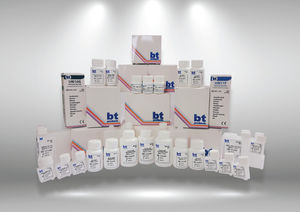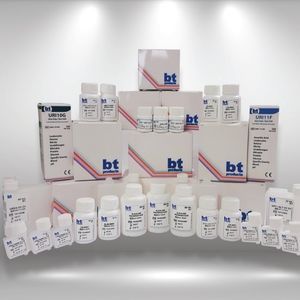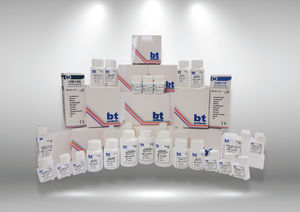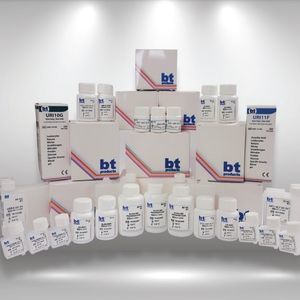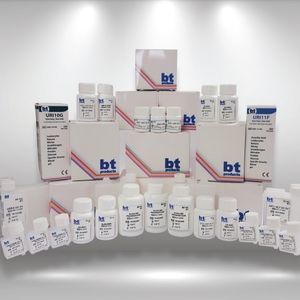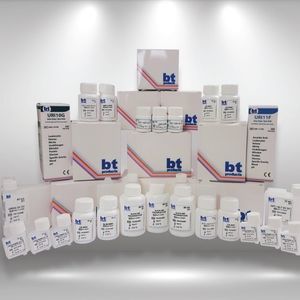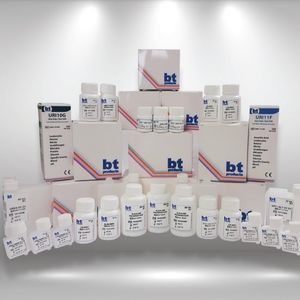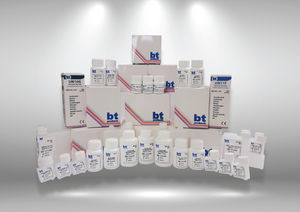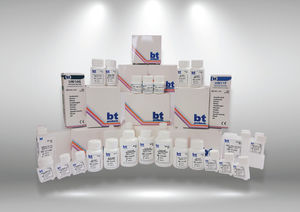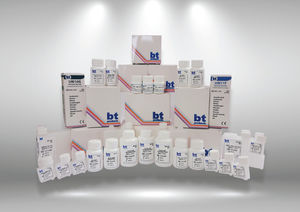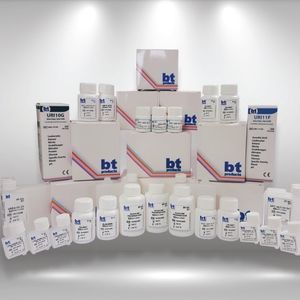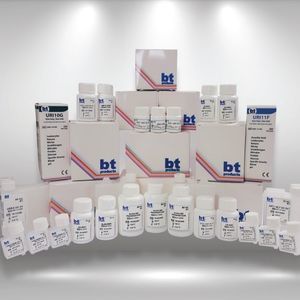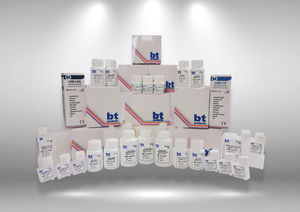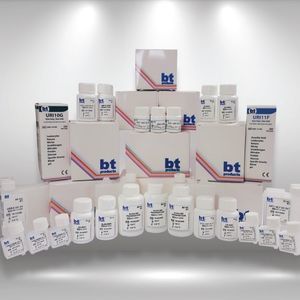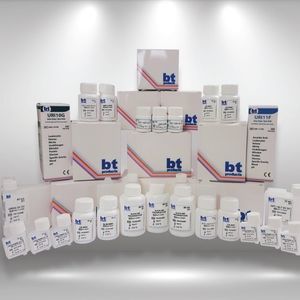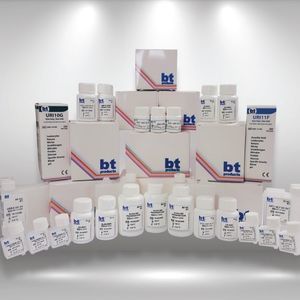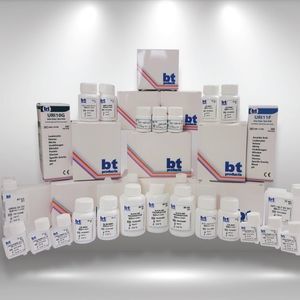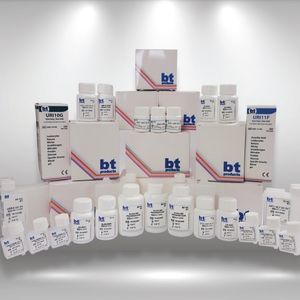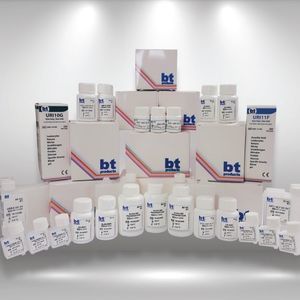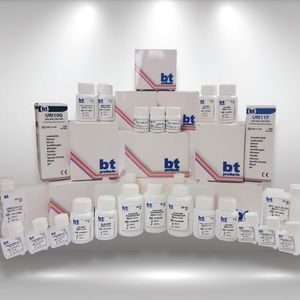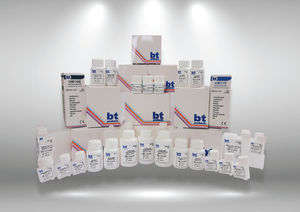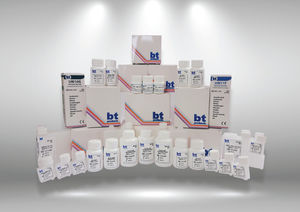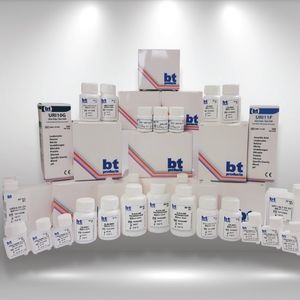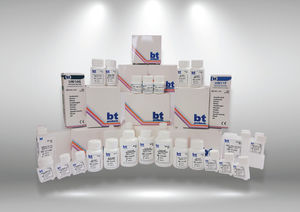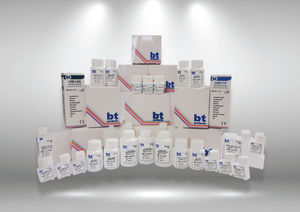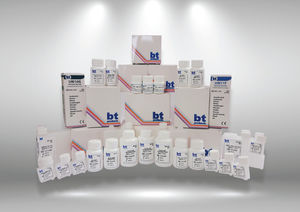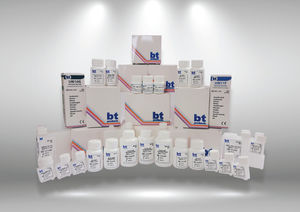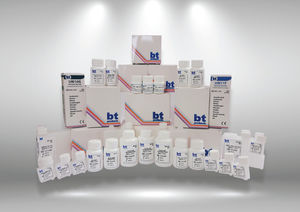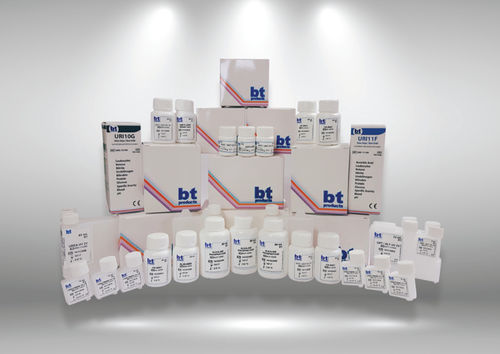
- Laboratory
- Laboratory medicine
- Solution reagent
- BILIMSEL TIBBI ÜRÜNLER
Iron reagent kit UIBC-50 seriessolutionpreservativediagnostic
Add to favorites
Compare this product
Characteristics
- Type
- solution, preservative
- Applications
- diagnostic, for biochemistry
- Tested parameter
- sodium, chloride, iron, lead, copper
- Storage temperature
Max.: 8 °C
(46 °F)Min.: 2 °C
(36 °F)
Description
For the quantitative determination of iron and total iron-binding capacity in serum.
PRINCIPLE
Total Iron-Binding Capacity (TIBC): A known amount of ferrous ions are added to serum at an alkaline pH. The ferrous ions bind with transferrin at unsaturated ironbinding sites. The additional unbound ferrous ions are measured using the ferrozine reaction. The difference between the amount of ferrous ions added and the unbound ions measured is the unsaturated iron-binding capacity (UIBC). The TIBC is equal to the serum iron concentration plus the UIBC.
REAGENTS
1. UIBC/TIBC BUFFER REAGENT: Tris 500mM, pH 8.1 with surfactant, Sodium Azide 0.05% (w/v) as preservative.
2. UIBC/TIBC COLOR REAGENT(Cromogen) : Ferrozine in hydroxylamine hydrochloride.
3. UIBC/TIBC STANDARD (500 g/dL): Ferrous chloride in hydroxylamine hydrochloride.
Precautions
1. All reagents are toxic. Do not pipette by mouth. Avoid all contact.
2. UIBC buffer contains sodium azide and may react with lead and copper plumbing to form highly explosive metal azides.
3. On disposal, flush with a large volume of water to prevent azide accumulation.
4. This reagent is for in vitro diagnostic use only.
REAGENT DETERIORATION
All reagents should be clear. Turbidity may indicate contamination and the reagent should not be used.
SPECIMEN COLLECTION AND STORAGE
1. Fresh, unhemolyzed serum is the specimen of choice.
2. Serum should be separated as soon as clot has formed.
3. Heparinized plasma may be used but other anticoagulants should not be used to avoid possible iron contamination.
INTERFERENCES
1. Certain drugs and other substances are known to influence circulating iron levels.
Catalogs
No catalogs are available for this product.
See all of BILIMSEL TIBBI ÜRÜNLER‘s catalogsOther BILIMSEL TIBBI ÜRÜNLER products
Universal Bottled Clinical Chemistry Reagents
Related Searches
- Solution reagent kit
- Diagnostic reagent kit
- Laboratory reagent kit
- Protein reagent kit
- Enzyme reagent kit
- Histology reagent kit
- Dye reagent
- Buffer solution reagent kit
- Antibody
- Clinical chemistry reagent
- Clinical chemistry analyzer
- Quality control reagent kit
- Automatic clinical chemistry analyzer
- Benchtop clinical chemistry analyzer
- Clinical reagent kit
- Virus reagent kit
- Test strip
- Tissue reagent kit
- Electrolyte reagent kit
- Colorimetric reagent kit
*Prices are pre-tax. They exclude delivery charges and customs duties and do not include additional charges for installation or activation options. Prices are indicative only and may vary by country, with changes to the cost of raw materials and exchange rates.



